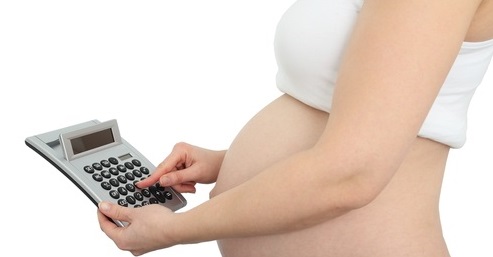The triple cost of having children

The research was conducted through interviews with women aged 25 to 39, earning between £24,000 and £40,000 each year. Scottish Widows, which has been researching and reporting on women and retirement for ten years, sponsored the research and provided expert advice to the project.
Positively, some participants in the research cited having children as a trigger to reviewing their spending and saving, prompting them to consider their pension. However, this comes at a time when many find their incomes stretched.
While maternity leave lasts 52 weeks, statutory maternity pay is only available for a maximum of 39 weeks. During the paid leave, employers must continue contributing to the pension, based on the employee’s normal salary.
Employee contributions can fall
However, any employee contributions are based on the actual pay they receive, which often means a shortfall. During the unpaid period the employee doesn’t have to contribute anything and the employer may not have to either, depending on the rules of the scheme and contract of employment. Very few of the mothers interviewed by the Fawcett Society had continued paying in during their period of leave, with affordability cited as a key reason.
Then, when mothers first return to work, they often do so on reduced hours. Unless they make changes to their contributions, this will result in further reduced savings. On top of this, when women return to work, there are often childcare costs and that is cited as a big challenge in being able to pay into a pension.
“Because childcare is so expensive…I think oh well I should pay a higher percentage into my pension, but I’ve got a about a grand in childcare fees to pay this month,” says Helen, 32, a travel consultant.
Mothers more likely to foot childcare bill
Compounding the gap between the saving levels of men and women, the mothers involved in this research were more likely to pay for childcare than fathers. So, with reduced earnings and higher costs falling on one person, it’s important that couples discuss their shared finances as they approach maternity leave and plan for the future together.
This is particularly important should the couple later separate; Scottish Widows’ research in 2014 has showed that among divorced women, 84% said pensions weren’t discussed or they couldn’t remember them being discussed as part of the divorce proceedings.
While some women saw having children as trigger for reviewing their pension, many had not considered the impact it would have on their retirement outcomes, flagging a need for employers and the industry to do more to build this understanding before women go on maternity leave. Tailored communications, which address the specific issues women are more likely to face, will help improve retirement planning, and ultimately support better outcomes.
At Scottish Widows, we worked in partnership with Mumsnet, to engage their users and get them asking questions about planning for retirement. We produced short films on YouTube, answering the top questions as well as a Q&A.
Lynn Graves is senior manager, market development, Scottish Widows.
This article was provided by Scottish Widows.





